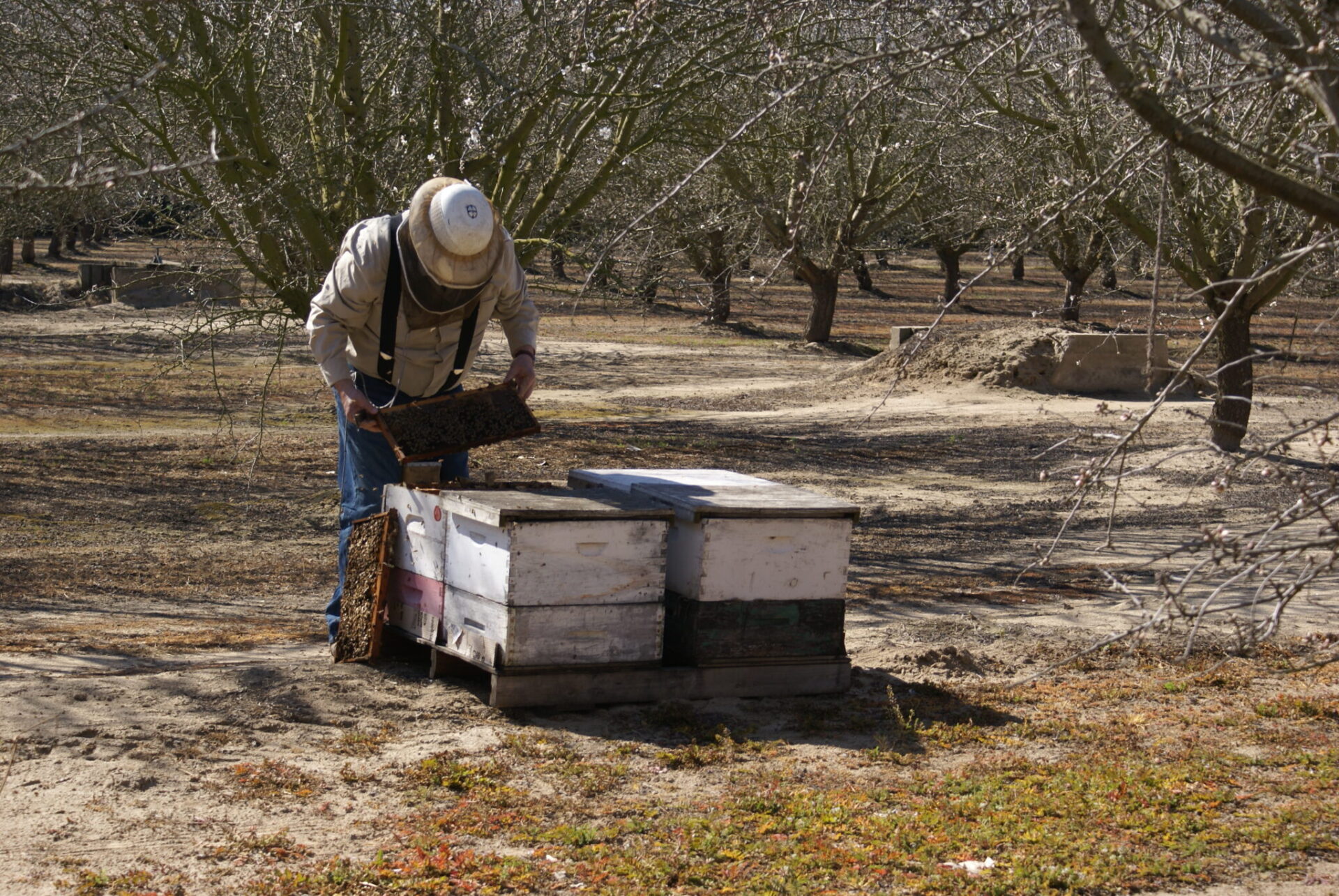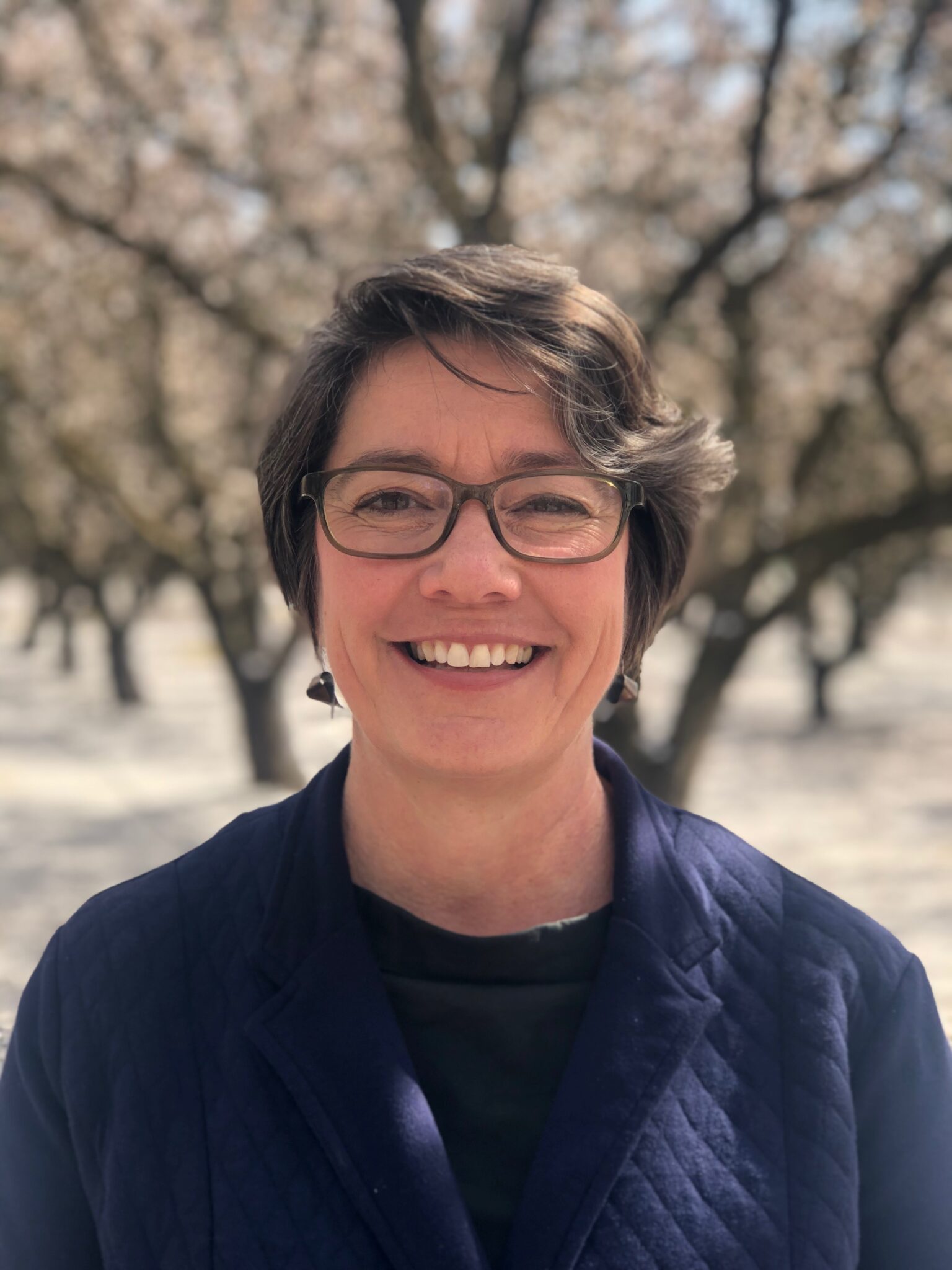
As almond acres have increased, so too has the price of pollination. According to the Almond Board of California (ABC), pollination accounts for between 15 and 20 percent of the cost of almond production.
Hoping to lower that percentage, last year ABC initiated research to reevaluate honey bee stocking rates.
“The new research will look at both conventional and self-compatible varieties to see if we can get consistent high yields with fewer bees,” said Josette Lewis, chief scientific officer with ABC in a presentation at The Almond Conference of 2020.
In a phone interview after the presentation, Lewis said the pollination working group of the Almond Board, which includes growers, researchers, farm advisors and beekeepers, proposed funding the research, hoping to get a fresh take on stocking-rate recommendations.
“There has been some discussion within the industry about how robust are the stocking rate recommendations, which are commonly understood to be 12 to 16 frames of bees per acre,” she said.
“There are some folks who feel quite strongly that that is more than we need.”
Lewis added, “The research that seems to have led to this common recommendation is pretty old, and maybe this is a chance to revisit that using different methods and also take into consideration the issue of self-compatible almond varieties.”
ABC asked UC Davis Extension Apiarist Elina Niño to submit a research proposal early last year, Lewis said. Niño spent the year mining past research and working out the logistics of how to conduct new research on the topic and in the fall presented what Lewis characterized as a promising preliminary report.
“She had some pretty good preliminary data, which leads us to be encouraged about the viability of doing this research,” Lewis said.
Niño was expected to present a proposal to ABC in December and the Board was expected to make a final decision on whether to fund the proposal in January.
If funded, Lewis said it will likely take several years “to get data that is robust enough and from enough different grower regions” to be able to inform comprehensive stocking rate decisions. But she added during her presentation, “I do look forward to keeping you informed as that research progresses.”
Honeybee BMPs
In the meantime, Lewis said growers can take several steps to get the most from their pollination investment, including adopting the Almond Board’s Honey Bee Best Management Practices. Found online on the ABC’s website, honey bee BMPs for growers include: establishing good communications to ensure that both beekeeper and grower expectations are fully understood; providing a clear area for bee drop-off; and following precautions when applying pesticides during bloom.
Lewis cautioned growers against tank-mixing insecticides and fungicides, noting that recent research has shown that the practice harms bees, even in cases where the individual chemicals in the mixes do not.
“Insecticides should not be applied during bloom time,” Lewis said, “and avoid tank-mixing different pesticides.”
She added that when fungicides are needed during bloom, they should be applied late in the afternoon or in the evening, when bees are not active.
“That is a very easy way to get both effective control of fungal diseases during bloom and to keep bees safe and healthy,” she said. “It should be standard practices for all of us in the industry.”
Lewis also noted that recent evidence has shown that some adjuvants can be harmful to bee health. “So, we recommend that you do not add an adjuvant unless it is specifically called for on the label,” she said.
Unfortunately, Lewis said, almonds have been linked in the press to other challenges confronting honey bees. “While we have a robust program to correct misinformation, following bee best management practices is the most essential way for us to demonstrate we are responsible,” Lewis said.
“Keeping bees safe when they are in an orchard helps you get the most from pollination,” Lewis said, “and it is also critical to defending our market for almonds.”
Cover Crops
Lewis also encouraged producers to consider whether a pollinator cover crop can work for their operation.
“ABC research shows that cover crops do not compete with almonds for pollination,” Lewis said. “In fact, other research shows that competition between honey bees and native bees who are lured by flowering plants can improve pollination. And new ABC funded research shows that hives are even more healthy coming out of almonds when there is a cover crop.
In a video that played during the presentation, John Miller of Miller Honey Farms in Newcastle, California, said that beekeepers appreciate coming into an orchard with a cover crop, because of the extra forage it provides. And, he said, a cover crop can improve pollinator performance. “It was like jump starting the hive,” Miller said of one such experience.
“Adding a cover crop provides more diverse nutrition and helps keep the honey bees in the orchard and improves return on investment for farmers,” Lewis said.
Cover crops also provide agronomic benefits, such as reducing soil compaction, improving soil water holding capacity and improving soil microbial activity.
On a marketing level, cover crops can help growers qualify for Bee Friendly Farming certification from the Pollinator Partnership, a nonprofit dedicated to promoting pollinator health.
“Bee Friendly Farming allows you to use the Bee Friendly logo in your marketing, getting credit for your investment in pollinator forage and habitat,” Lewis said.
Lewis also provided information on a cover crop incentive program ABC launched last year in partnership with Project Apis m., a nonprofit dedicated to supporting pollinator health research. Called the Bee Plus Scholarship, the program provided up to $2,000 of free cover crop seeds to participating growers. Growers also were able to use the scholarship to cover the registration costs for obtaining Bee Friendly Farming certification.
As of press deadline, ABC was considering a second round of funding for the Bee Plus Scholarship next year.
“I encourage you to look at these programs now and consider if they might fit with your operation,” Lewis said.











